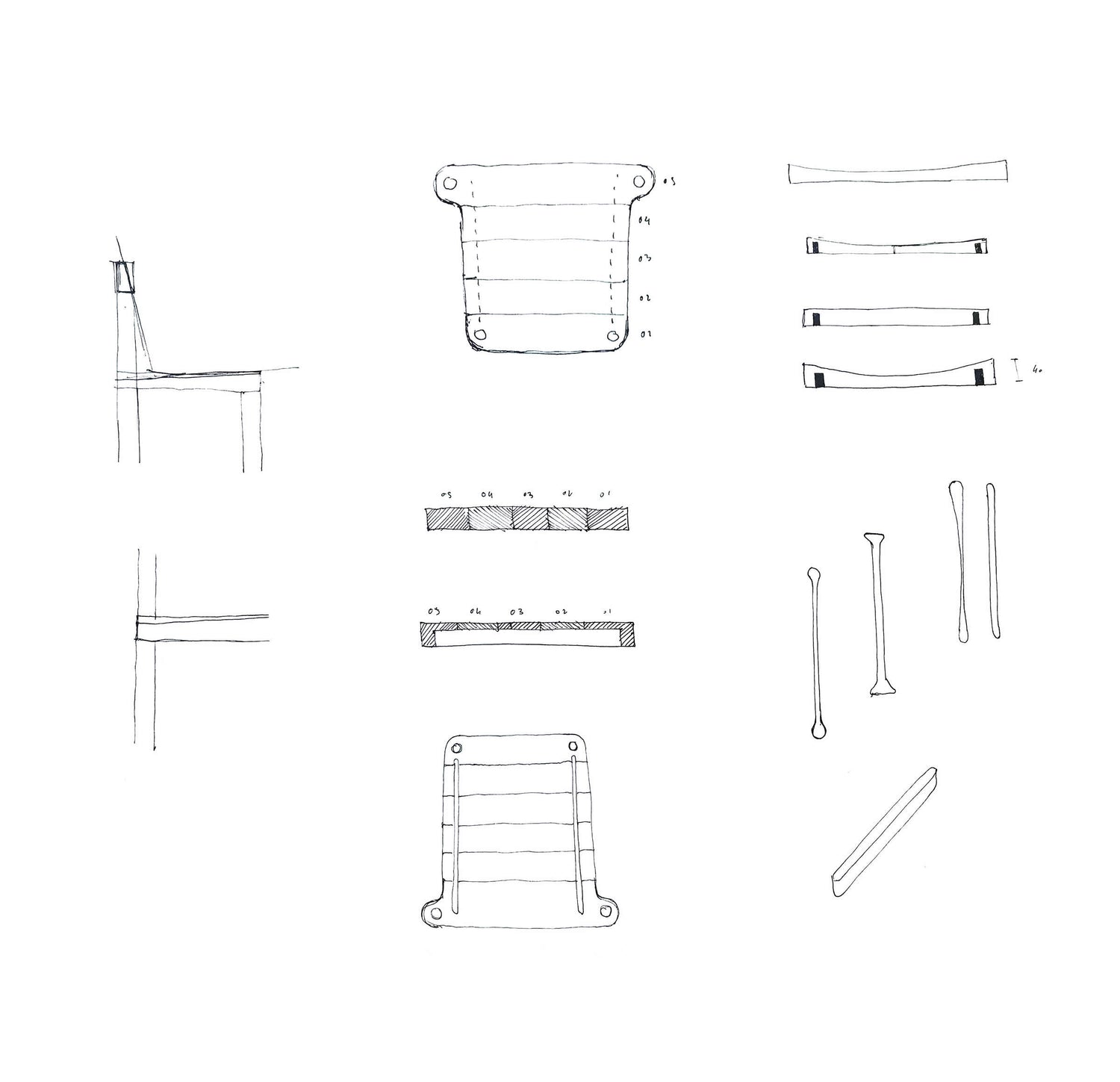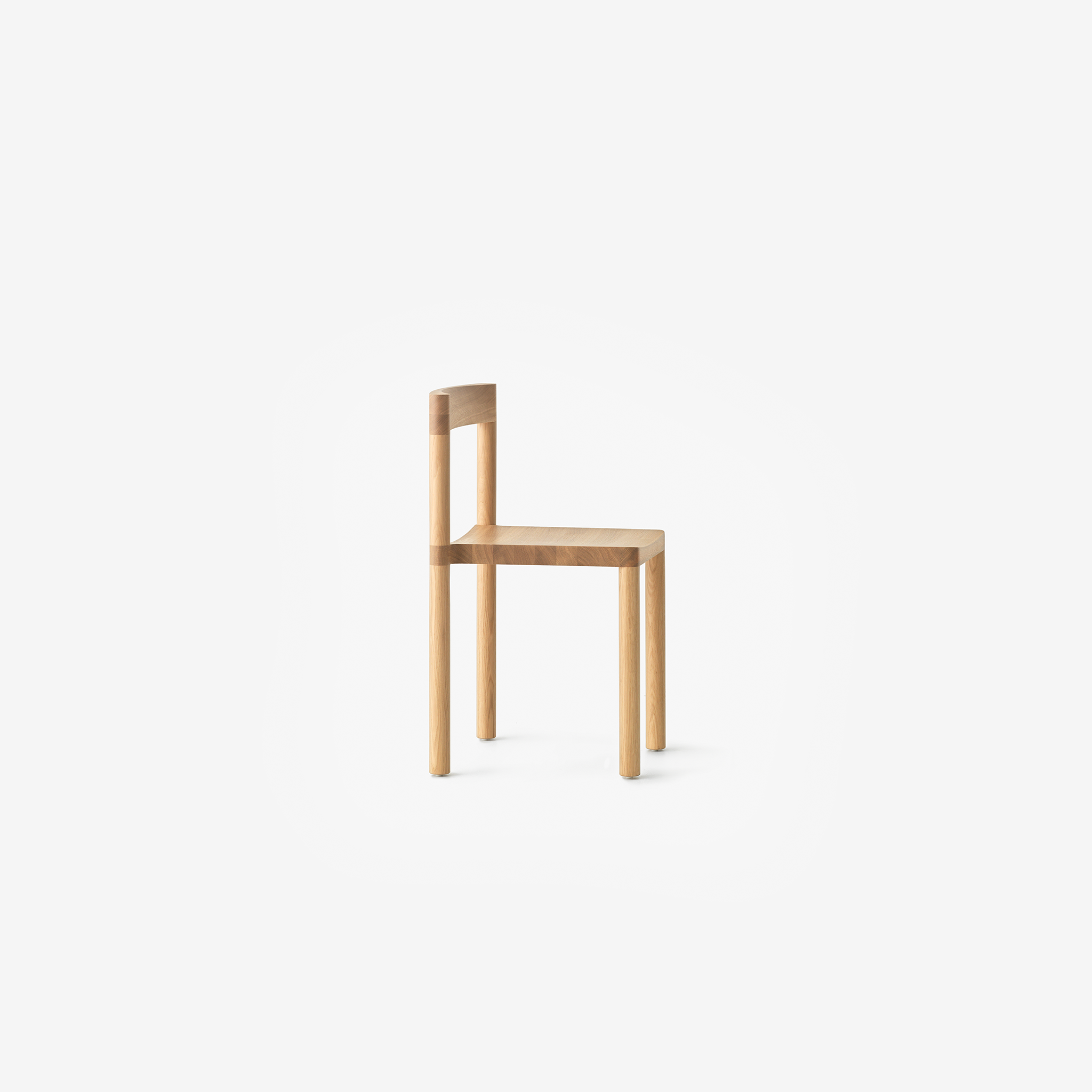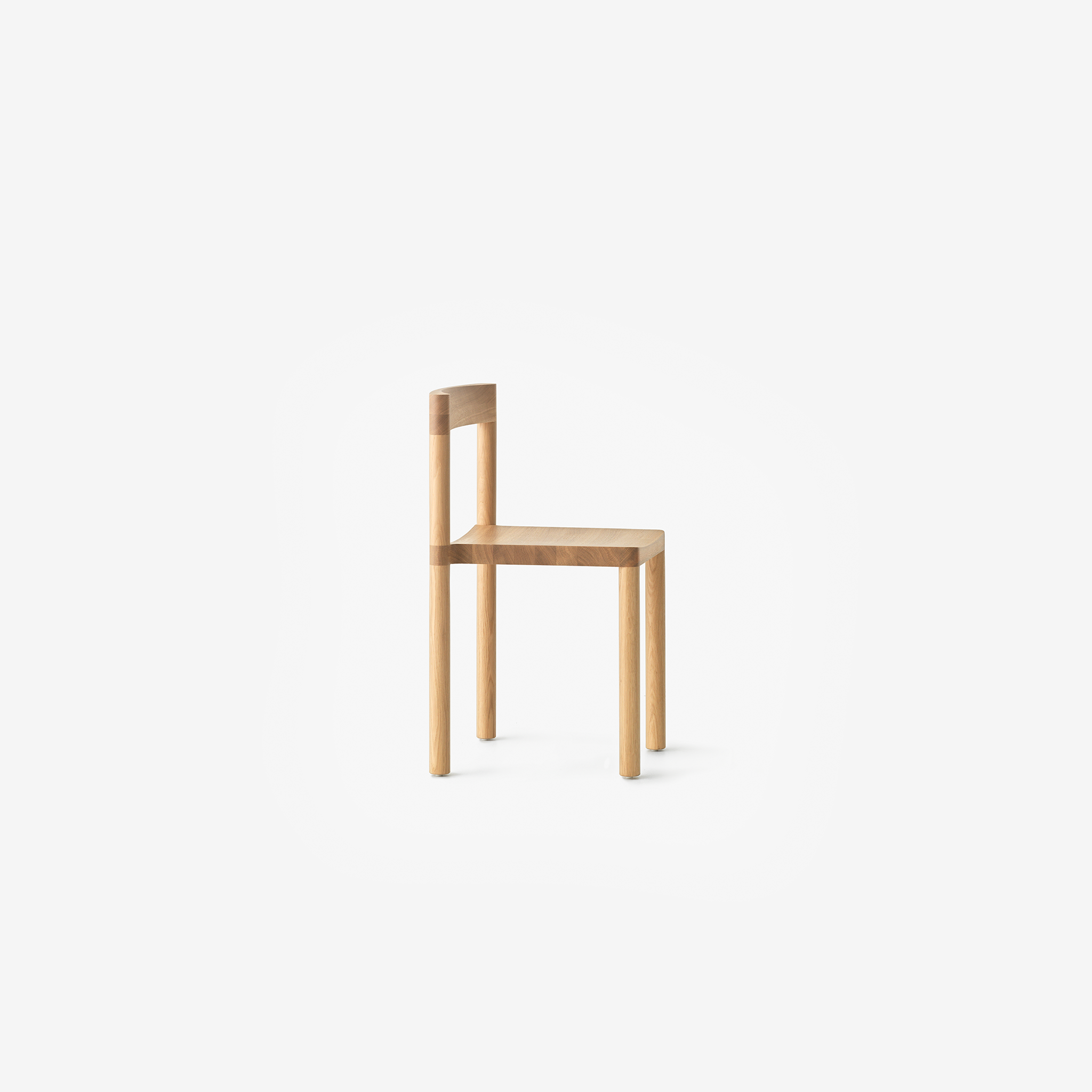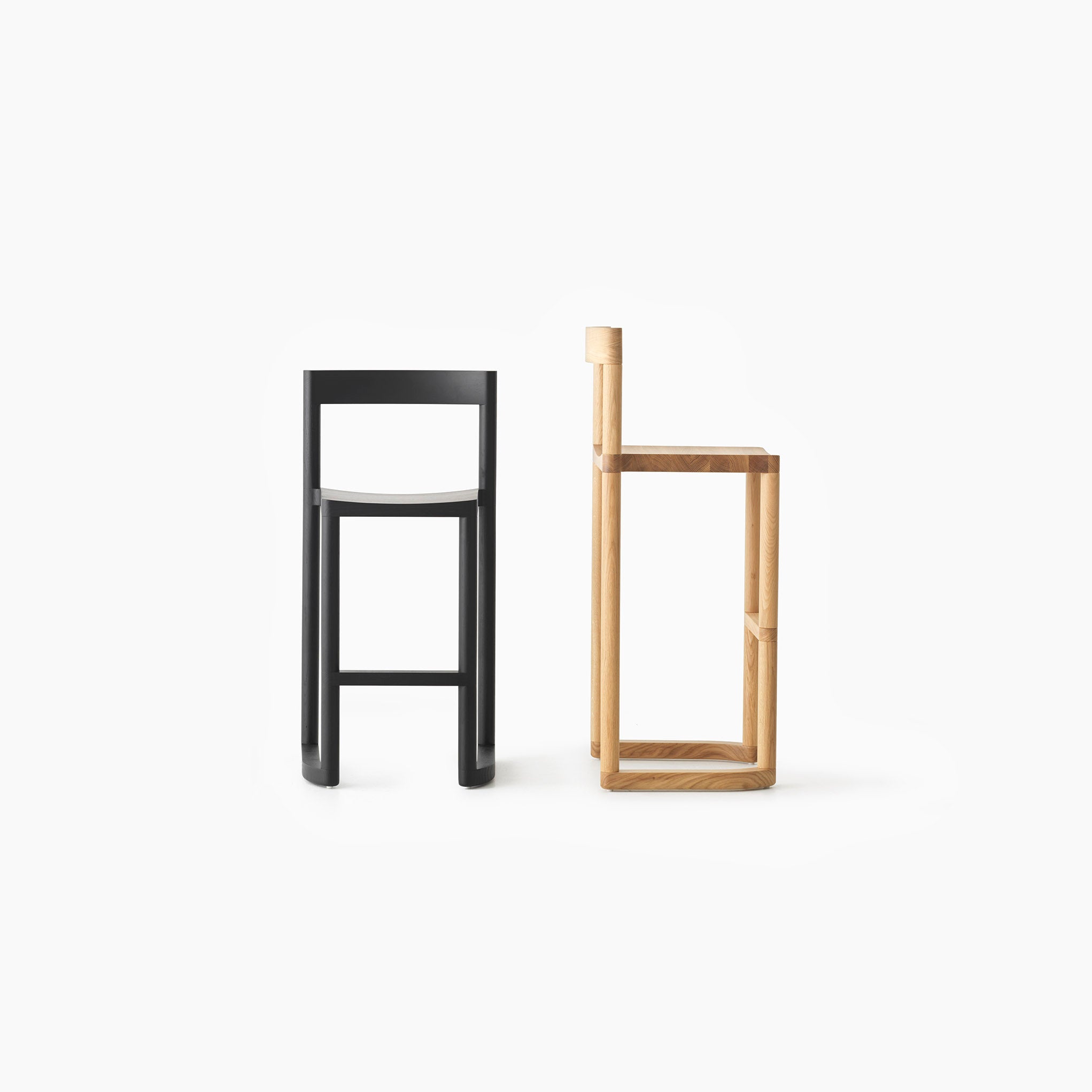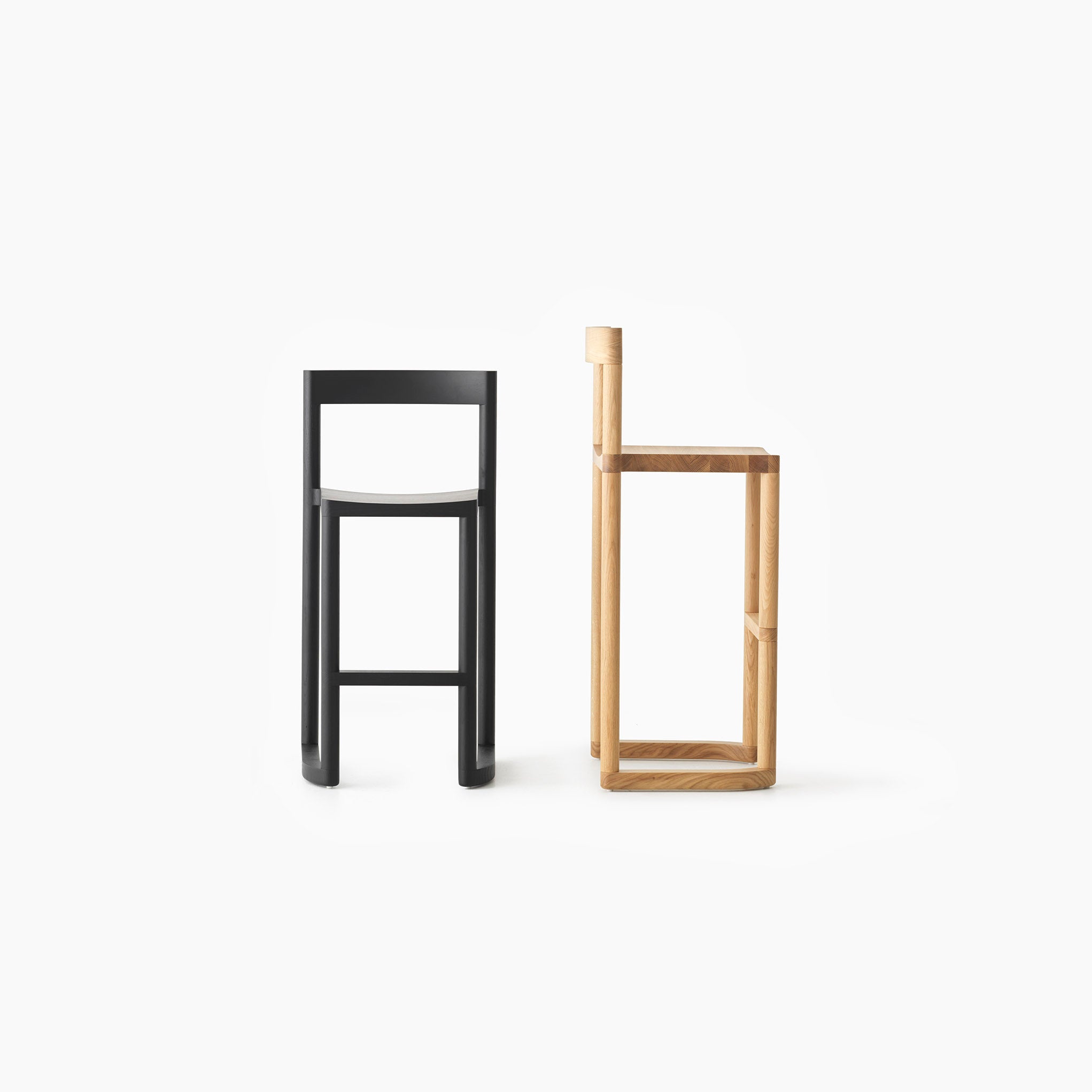Can you talk us through some significant moments on your journey to becoming an architect and product designer?
I was fascinated by aeronautic and aerospace design while growing up so I chose to study aerodynamic physics after high school. A year later, I realized that mathematical driven forms weren’t what I was looking for, so I changed to architecture. Architecture and product design became complementary for me and shortly after starting my studies I developed a parallel research in producing objects. In 2010, while working at the office Herzog & de Meuron in Switzerland, I made a very thin plywood lamp that used a book as a base. It was exhibited internationally and I guess it started my design career. After graduating as an architect, I started to work on different scales of project including housing, scenography, furniture design and lighting design.
How would you best describe yourself in the architectural and design space?
I would say that I try to design architectures and objects that are lasting. Lasting in the sense of the relevance of a project in the society, as well as lasting in the sense of a durable project. Both have to do with transmission. If the project can last for more than a generation, it can be transmitted, and if it is still relevant in our future societies, it will be used and transmitted again. The Pier collection was designed with these principles in mind.

You are based out of your studio in Paris, can you describe your space and the importance of your work setting?
I work in a studio in the 20th arrondissement in Paris. It is about 15 min bike ride from my apartment in the 11th arrondissement and as it is not so far I can ride no matter the weather. My studio space allows me to produce models and 1/1 prototypes which are key in my design process. Experimenting with materials let me understand their limits and their behaviours, so I like to collect samples over the year to build up a library.
What are some of the key components you think about when starting an architectural project compared to a design project?
Both projects start with the same principles in mind. Materials, usages, structure and proportions are always questioned without a priori to reach the essence of a project. Of course in an architectural project the timeline would be different, but the process would still be the same. From the early concepts to the production, I allow time to put in perspective every aspect of the project.
Where does every design/ architectural project begin? As a sketch? Can you share that journey?
I always draw on A4 notebooks and sometimes late at night to save a concept or an idea. It’s while drawing that I think about the different parts of a project like a spatial sequence, the proportions, the structure, etc... in order to eliminate options before modelling on a 3d software or starting to test with physical models or prototypes.

Where do you source your inspiration for a project? Is this a different process every time? Can you speak to The Pier Chair and stool as an example?
Travelling is my main source of inspiration. Being surrounded by different cultures and environments allows me to take some steps back from what I am familiar with, extending the fields of possibilities. In 2016, I traveled across the west of the United States and stayed in Los Angeles for a week. On the Pacific ocean coast, the long wooden pier of Santa Monica built more than a century ago left a great impression on me. Its simple structure made with round pillars, almost primitive, was built to endure the difficult weather conditions of the ocean. This wooden pier, images well for me the notion of a lasting construction. Inspired by these massive pillars, the Pier collection is designed around thick cylindrical solid oak elements.


Who are some people that have influenced your work?
I guess that the work of Japanese architect Kazuo Shinohara has been a great source of inspiration for me while studying architecture and design. Can you talk about your style of Architecture? And how might it influence your design work? Or vice versa? Object and architecture have always influenced each other in my work, as the dialogue from one scale to another enhances both. The Pier collection was the opportunity to experiment with solid wood assemblies to reach strong and lasting connections. The tenon and mortise joint that I developed in the studio also initiated a research on possible architectural application with the same principles in mind. From the furniture scale to the architectural one, I developed a timber architectural grid system that is using only one type of assembly to mount a structure rapidly on site. Influenced by the Pier collection, this architectural structural system uses cnc carved dovetail joints to interlock each piece of the three dimensional grid. Naturally insulating, the timber elements welcome the window frames and prefabricated wall panels. From the architectural scale to the design one, I realised that the wooden architectural structure could also be adapted back to the scale of furniture in the form of a storage system. Using the same production process and machines, I developed a shelving system that is made with only two different solid oak pieces and that does not require any screw to be mounted.
Do you have anything exciting coming up that you can share with us?
I recently got selected for a new architectural project in Switzerland. Entirely made in recycled concrete it will offer an interesting spatial sequence with beautiful frames on the Swiss landscape. I am also working on a new sofa collection that will be released next year as well as a table, a shelf system and two table lamps.

View Léonard Kadid's designer profile and Resident range online.
